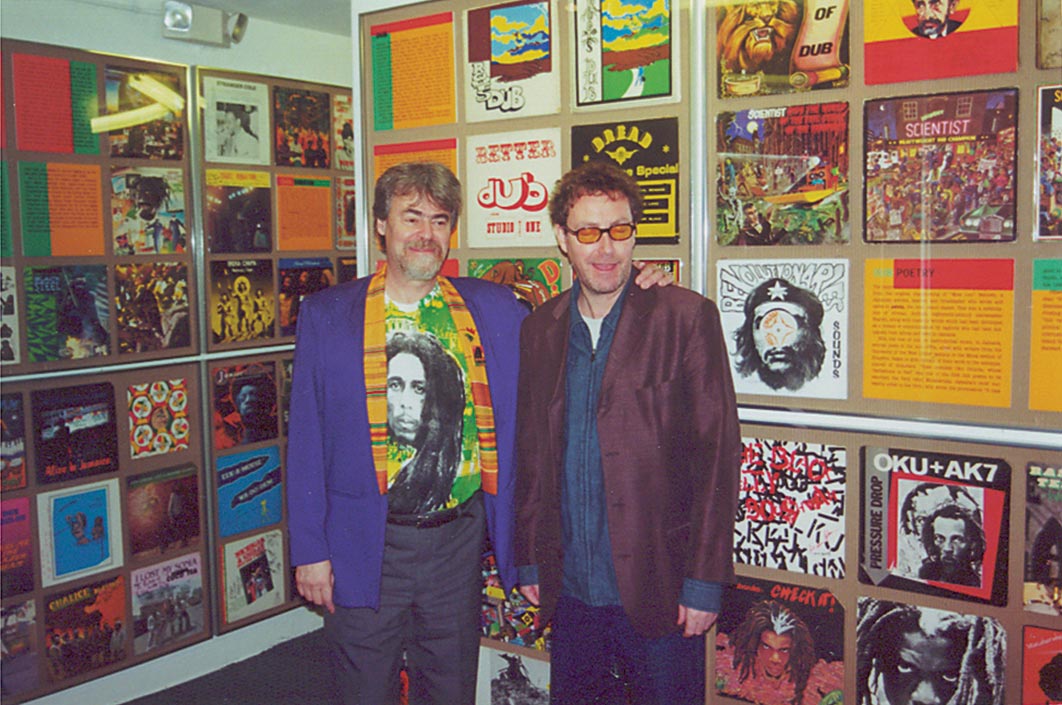The world’s most famous collection of reggae music and memorabilia, and the man who has devoted most of his adult life to accumulating it, are going to be parting company in the not too distant future.
And Roger Steffens couldn’t be happier.
I caught up with “Ras Rojah”, the legendary reggae historian, at his Los Angeles home the other day, a few hours after he’d returned from yet another trip to Jamaica.
As always, he was brimming with the latest reggae runnings. The first news he shared with me was intriguing: he’d laid his hands on another three hours of unreleased Bob Marley tapes on the trip — music that few people even knew existed, by the man many regard as the most important singer-songwriter of the 20th century.
Then came the big story. The government of Jamaica, Roger told me, had just agreed to acquire his Reggae Archives, and that remarkable collection is going to be the core of a new Museum of Jamaican Music.
For Steffens, whose fascination with reggae began when he heard the Wailers’ Catch a Fire back in the early 70s and was instantly and irrevocably hooked, the deal is the bittersweet culmination of almost three decades of scouring the globe for every reggae-related item he could lay his hands on — from T-shirts to posters, from obscure 45s to rare video footage, from long-lost tapes to offbeat postcards.
“I’ve agreed to let everything go,” he told me. “But,” he added quickly, “I’ll be making copies of the things I can’t live without.”
“Everything” includes 12,000 reggae cassettes, 10,000 records and CDs, 3,000 hours of video and film footage, 10,000 posters and fliers, thousands upon thousands of reggae photographs, 4,000 buttons and badges, 3,000 magazines and books, 1,000 reggae T-shirts, dozens of stamps and coins bearing Marley’s image, 16 four-drawer filing cabinets of clippings, and hundreds of artifacts from around the world. Oh yes, and a virtually priceless copy of Marley’s first single, Judge Not. Signed by Bob, naturally.
Steffens is philosophical about the imminent prospect of parting with his life’s work. “I’m absolutely comfortable with the decision. It should be in Jamaica. That’s where it belongs.”
And it’s by no means going to be a final farewell. Jamaica’s cultural czars would like Steffens to have an active role in the new museum as curator emeritus.
The archives currently occupy six rooms in the labyrinth-like basement of Steffens’s Los Angeles home, which Roger and his family were forced to move into a few years ago when the collection outgrew their previous house.
The long trek home to Jamaica will be the second major upheaval for the fabled archives. For eight months of 2001, the cream of the collection was on display in a museum-style exhibition at the Queen Mary tourist complex in Long Beach, California, where it drew acclaim not only from the media but from many of reggae’s legendary figures.
One of my lingering memories from that exhibition is standing next to Tony Chin, the great reggae guitarist with crack outfits like Soul Syndicate and the Ark Angels, as he pointed to one after the other of the vintage album jackets on display. “I played on that one . . . and that! That one too!” Chin exclaimed excitedly. “This is wonderful, really wonderful. It makes everything we’ve done, everything we’ve worked for, worthwhile.”
Plans for how the archives will be displayed in Jamaica are still in their infancy, but one likely scenario is to have what Steffens describes as the “sexiest” items in the collection housed on the North Coast — where most of Jamaica’s tourists head — in a museum setting along similar lines to the Queen Mary exhibition, with the balance being used for educational purposes at the Kingston campus of the University of the West Indies and in the archives of the Institute of Jamaica.
When he finally parts company with his beloved archives, Steffens will have more time to devote to his various other interests: actor, author, lecturer, photographer, editor and producer. He’ll also be on the road with his acclaimed video lecture presentations on Marley and Peter Tosh, which he’s taken to venues ranging from the Rock and Roll Hall of Fame to Amsterdam’s Milky Way. Both presentations drew standing ovations in 2001 from the toughest reggae crowd in the world in Kingston, Jamaica, before audiences that included many of the people who knew and played with both Bob and Peter.




















